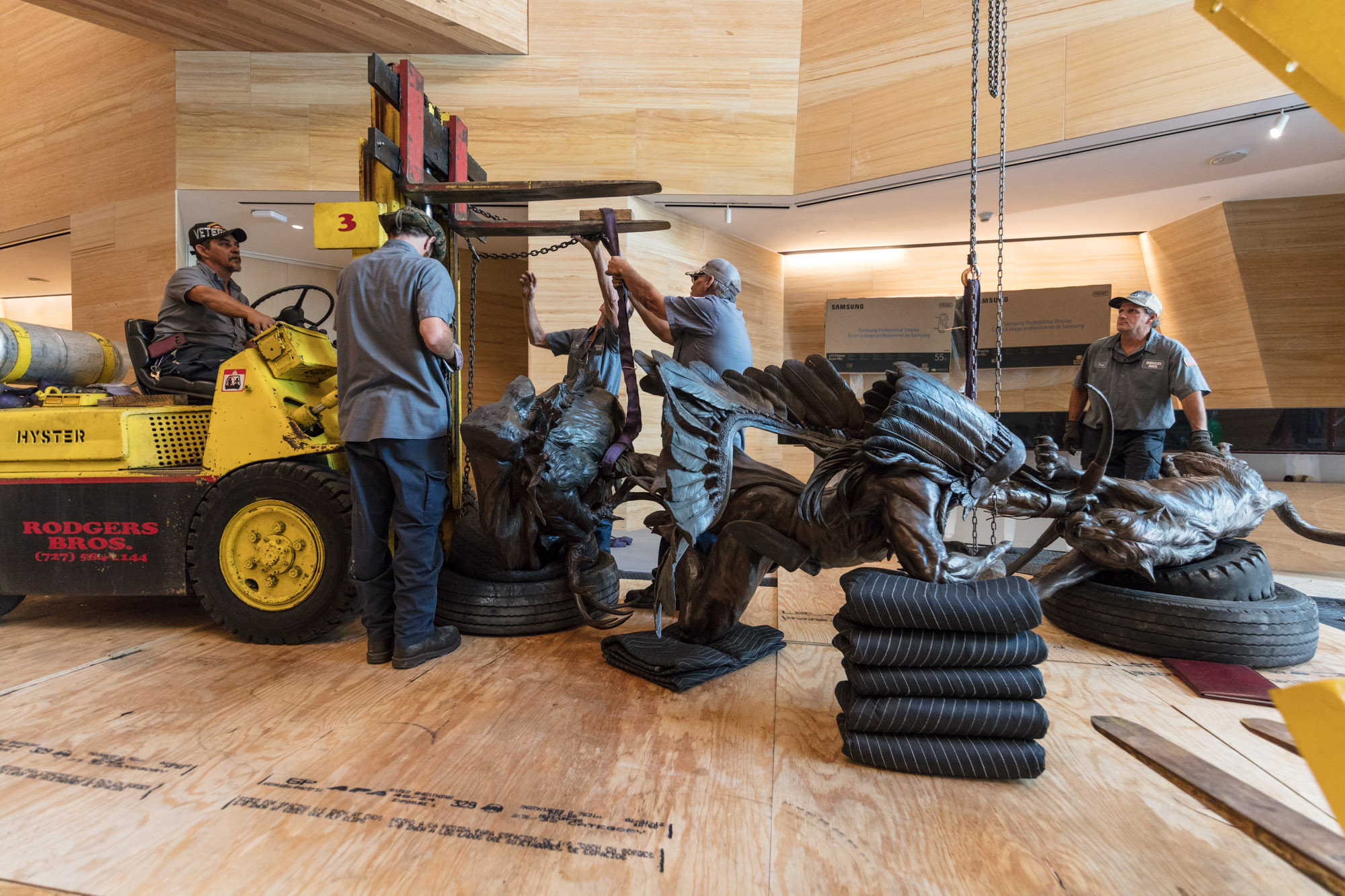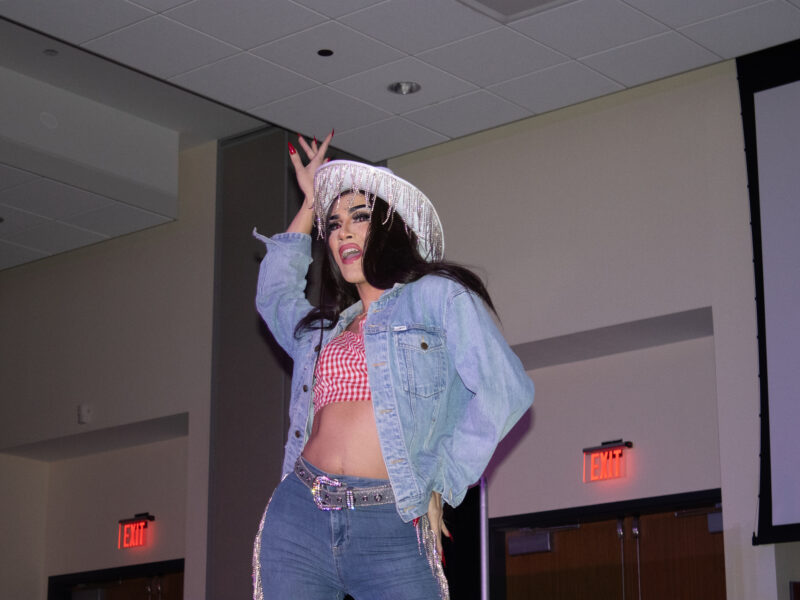Above photo: The James Museum of Western and Wildlife Art harbors the work of over 200 artists, 98 percent of which are still alive. Courtesy of Brock Communications
By James Bennett III
The James Museum of Western and Wildlife Art is more complex than Stetson-adorned cowboys drinking sasparillas and dueling at high noon.
It is the product of over 200 artists, decades of art collecting and Tom James’ nuanced interest in American art and history.
James, the owner of the museum and chairman emeritus of Raymond James, allowed The Crows Nest to tour the museum before the opening weekend.
“We hope that our guests will come and be taken to a place where much of our culture and heritage began,” said James. “And that every visit to our collection will include education as part of the experience.”
The museum sweeps people away from the modern industrial setting of downtown St. Petersburg drops them right into a Western movie.
The Teak Sandstone mesa, which resembles Colorado’s Mesa Verde Cliff, becomes an arroyo and sculpture sanctuary, complete with a waterfall as you walk through the front door of the museum.
An extensive amount of attention was paid to detail, from the placement of the ten-thousand lights, to the thematically painted walls and placement of art.
Remembering that the building was originally a parking garage can be shocking.
One room, which resembles a geode, is dedicated to a collection of contemporary American Indian jewelry.
The jewelry room opens to reveal an array of bolo ties, necklaces and earrings. The black walls are rumored to be laced with glitter so that the jewelry shines even brighter.
There are eight themed galleries ranging from Native life, cowboy culture and international wildlife depicted in their natural habitat.
The majority of sculptures are out in the open within arms reach of guests — although the docents do not encourage touching the statutes. The museum designers felt that the layout would accent the American history theme as it should feel inclusive to its visitors.
Aside from watching out for museum-goers with wandering hands, an army of docents are also available to answer any questions the visitors might have.
James became enamored with Western and Native American art while on a skiing expedition.
He discovered that most of the ski resorts had wonderful art galleries, but he waited to purchase any of the artwork. Instead, James took his time getting to know the gallery owners and artists.
“I was scared to death that if I started buying it, it would be a disease,” said James.
His fever began roughly years later when he told his wife Mary that he was off to buy some art.
He left with the intention to spend $15,000 on artwork, and returned having spent $30,000.
James hopes to promote living artists and aims to elevate them to a point of vocation. Of the artists showcased at the museum 98 percent are alive.
The majority of American Indian artwork draws from various tribes, artistic styles and mediums.
“We’re trying to help talented young artists make a living in fine art,” said James, adding that there is a special gallery in the museum reserved for living artists who deserve recognition and support. Instead of displaying western and wildlife art the special exhibition will house artwork that the museum deems underappreciated.
James also hopes that the museum will act as a tool to educate people interested in America’s history and artists.
As time passed and James began to collect more western art, he received a disenchanted education of the west from the Native American artists he had come to call friends.
His conversations with the artists lead to lectures discussing the art and its intended purpose.
He became fraught over the actions of his forefathers and the excessive relocation of the Native Americans; of broken treaties and money allocated to the Americans running reservations, rather than the Natives.
Although the museum is incapable of changing the past, it does have the ability to educate visitors on American heritage in a respectful and empathetic manner.
Individuals wishing to view the collection are able to visit the James Museum of Western and Wildlife Art at 150 Central Avenue, St. Petersburg.
The grand opening celebration will be on the weekend of April 28.
Their daily hours of operation are from 10 a.m. until 5 p.m., or 8 p.m. on Tuesdays.
Public tours are available on Saturdays at 11 a.m. and 1 p.m., and give 45-minute overviews of the galleries. The tours are included with admission, without requiring a reservation.
Private docent-led tours of the museum are available for groups of 10 or more, and must be scheduled at least four weeks in advance.
Adult group rates: $15 for adults; $10 for seniors (65+) and college students; $4 for schools.
For more information, email education@thejamesmuseum.org.
Parking is available on floors 3 – 4. $2 per hour, $15 maximum per day.
Pricing
General Admission – $20
Students/Military/Seniors 65+ – $15
Youth (7-18) – $10
Children (6 & under) – FREE



